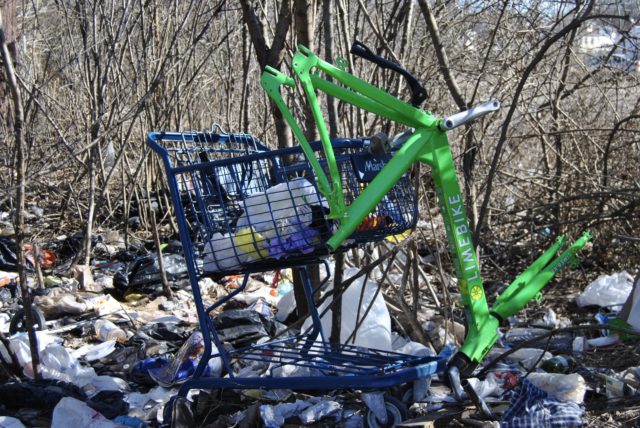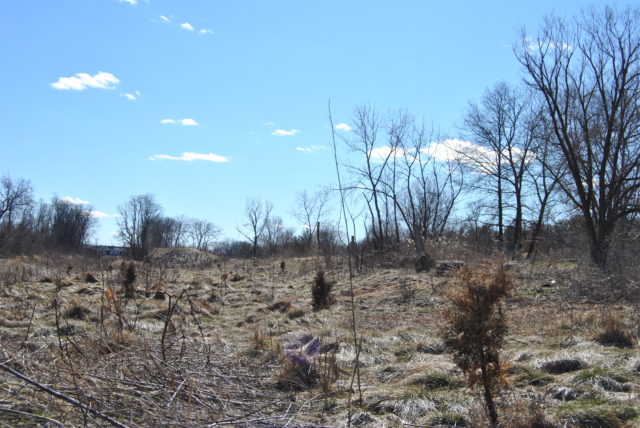 The last Plan of Conservation and Development¹ was nowhere near as bold as necessary, and its Green Hartford and Sustainable Development segment was no exception, as evidenced by this definition of the concept of sustainability: “Sustainability has become a wide-ranging term that can be applied to almost every facet of life. Sustainable development can generally be defined as development that meets the needs of the present without compromising the ability of future generations to meet their own needs.”
The last Plan of Conservation and Development¹ was nowhere near as bold as necessary, and its Green Hartford and Sustainable Development segment was no exception, as evidenced by this definition of the concept of sustainability: “Sustainability has become a wide-ranging term that can be applied to almost every facet of life. Sustainable development can generally be defined as development that meets the needs of the present without compromising the ability of future generations to meet their own needs.”
Despite that, Hartford does seem to have made the most progress with environmental initiatives, though with our climate crisis, we all really need to (1) do far more than we are, and (2) build ourselves a time machine, go back, and make better choices.
Weirdly, the POCD from 2010 boasts of the solar panels that had been (then) recently installed on the Goodwin Memorial Library at a value of roughly $80,000. This was one of the branches that closed at the end of 2017. Fortunately, a design studio moved into that building and continues to allow use of the space by community organizations. So, even if creative reuse was not listed in the POCD as a goal, there’s that.

Today, the POCD goal for the City of Hartford to use only clean energy sources by 2030 seems like nothing. It lacks the urgency that we know, without a doubt, is needed. Environmentalism is no longer about tree hugging; it’s far more selfish than that. Now, we aim for simple self-preservation, to have a habitat that will support human life beyond the next few generations.
Solar panels were installed on the North Meadows bird sanctuary in 2014 and in 2016 the City of Hartford created a program to help homeowners finance solar panel installation. It’s no longer rare to spot solar panels on homes in neighborhoods like the South End and Behind the Rocks, but there remains room for expansion, especially in the predominately working class neighborhoods.
We also see this absence of urgency and seriousness with former goals like requiring “all municipal buildings constructed 5,000 square feet or greater in size must be at least LEED Certified Silver.” Why would there be a size minimum for this regulation to kick in?
In 2010, however, the City was grappling with waste reduction goals that seemed to have evaporated somewhere between then and the time that the trash-to-energy plant broke down in 2018. For instance, there had been the reasonable goal to “investigate ‘Pay-As-You-Throw’ solid waste programs, and determine if such a program would be feasible and desirable for Hartford.” The bulky waste program somewhat resembles this, but has obvious flaws that still need working out. (Yes, people should absolutely pay for disposal of excessive waste and should not expect specialized trucks to waste fuel roaming every street, every week. The City of Hartford is well aware of how the rollout of this program lacked in communication with residents. More could be done to improve this communication, though steps are being made in the right direction.) For regular trash, a program that requires residents pay for bags upfront could help limit how much waste individuals produce; but then, it could result in people tossing their nasty chicken bones and soiled diapers into the street. To think that people believed the littering would stop if only we covered up that Park River!

Still, one of the goals is to “reduce littering and illegal dumping through aggressive enforcement and fines for violators.” Occasionally someone gets ticketed for littering, but not on a level that I would call aggressive. It appears that police are making several arrests each month for littering, a few targeting areas where illegal dumping routinely occurs. I would much rather see law enforcement resources devoted to dealing with litterbugs than to monthly prostitute roundups.
For whatever reason, there are regions of the country where littering is not widespread. Let’s look into what programs and practices are in place in those cities, and see how we can adjust these to fit Hartford.
Much of this part of the POCD was devoted to maintaining programs, like single-stream recycling and the hazardous waste collection. Collecting electronic and hazardous waste monthly seems more productive than every six months or annually. How many residents are willing to store garbage in their homes for months on end? Maybe those who have the space or who actually identify as environmentalists.
The City did install trash and recycling bins in Downtown and various neighborhoods, but the Big Belly receptacles did not work out well in all locations. Many of the compactors were left to overflow and malfunction. Others were vandalized. Even with what goes where labeled clearly, you can see machines where trash has been stuffed into the recycling side. A simpler system with less reliance on technology might have been a better solution.

As for single-stream recycling, this might be coming to an end, judging from the recent coverage of how it has been playing out in the region. We’ll see what happens in Hartford. Whether it’s single-stream or the old school method requiring residents to separate materials in the bins, the important thing would be boosting levels of recycling, and reducing the amount of stuff people are choosing to consume in the first place.
Speaking of reducing consumption, back in 2010, they suggested “adding a surcharge on the use of plastic bags by local businesses.” Finally, in 2019, Hartford has begun to press for this. What explains the long gap between posting the goal and finally grappling with this in City Hall? Does an issue have to trend on Twitter for Hartford to reluctantly address it?
Reducing consumption is not rocket science. How many times have you walked by a DPW vehicle idling, inexplicably, in a City park? Witnessed workers using leaf blowers² on windy days? Remember that time former Mayor Segarra exchanged the City-issued Prius for an SUV? Opportunities to trim down are all around us. Often it means replacing bad habits with healthier ones, and there are all kinds of psychological barriers people erect to resist change. But, if we want a habitat, we need to make wiser choices.

Centralizing public transportation around Union Station was another thing that Plan of Conservation and Development called for. That has not really happened, but you can read more on that in the Transportation & Circulation segment. There was one success related to transportation: installing LED streetlights as a replacement for incandescent ones has finally begun to take place. Crawling along, though, is the Park River Greenway, which was supposed to be created from Newfield Avenue to Hamilton Street using grant funds from 2009-2010. There is record of people advocating for a greenway or linear park along the Park River since at least 1992. There is still no greenway from Flatbush to Hamilton. Currently, City Council is voting on accepting a grant that would pay for the design and construction of a segment of the South Branch Park River Trail. In recent years, the wetlands on the west side of the South Branch Park River, north of Flatbush, were given some attention.
Stormwater management was something the Plan of Conservation and Development listed as a goal. It looks like the North Meadows dike has been improved in the last year. MDC is currently building a giant $500M tunnel to address stormwater and sewage.
 The goal of developing and promoting “a backyard composting program for City residents, most likely in conjunction with individual neighborhood organization” has not gone anywhere yet, but there is reason to be hopeful on that. In 2017 — though this was not suggested anywhere in the POCD — Mayor Bronin established the City of Hartford Office of Sustainability. So far, they have coordinated with the MDC distribution of free rain barrels to residents. They hope to expand that program and add to it compost bins/machines for residents.
The goal of developing and promoting “a backyard composting program for City residents, most likely in conjunction with individual neighborhood organization” has not gone anywhere yet, but there is reason to be hopeful on that. In 2017 — though this was not suggested anywhere in the POCD — Mayor Bronin established the City of Hartford Office of Sustainability. So far, they have coordinated with the MDC distribution of free rain barrels to residents. They hope to expand that program and add to it compost bins/machines for residents.
The City of Hartford Office of Sustainability is another area that needs more funding and staffing, but at minimum, it shows Hartford finally acknowledging the need to get more serious on environmental issues by both existing and by making smart hires. They have already created a Hartford Climate Action Plan, a measure far meatier than the POCD. So, while the POCD segment on the environment felt weak, something more aggressive has taken its place.
From looking at previous Plan of Conservation and Development goals for transportation, sustainability, and the parks, one thing is clear — we set very low goals for ourselves last time around. Want to help shape the next Plan of Conservation and Development? Take the survey.
¹This link was not broken during the drafting of this piece in March 2019. At time of publication, none of the section links were working — only the one for the massive document.
²Let it be known that I have no time to run for mayor this year, but had I the confidence to waltz into that arena like so many others, I would design my platform almost entirely around banning leaf blowers.
Donna Fleischer
Invaluable posting. Thank you!